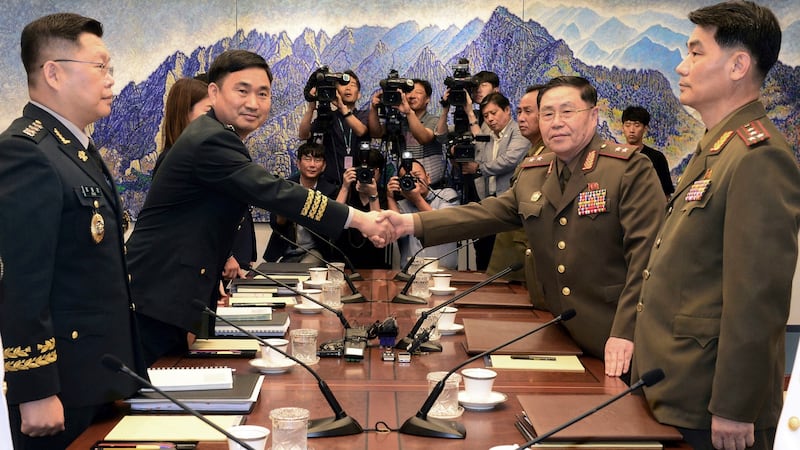North Korea continues to build new intercontinental ballistic missiles, a senior US official has said, despite Pyongyang’s promises to denuclearise the Korean peninsula following talks between Donald Trump and Kim Jong-un.
Spy satellites spotted one or two new liquid-fuelled intercontinental ballistic missiles (ICBMs) at the Sanumdong research facility on the outskirts of Pyongyang, the Washington Post reported, citing anonymous US officials.
Another unnamed US official then told the Reuters news agency that satellite photos had shown a lorry and a bright-red covered trailer similar to those the North uses to transport its ICBMs. The official said it was unclear how advanced the work is.

The plant at Sanumdong produced two of North Korea’s ICBMs, including the Hwasong-15, which the North Koreans claimed was capable of reaching the eastern coast of the US. The facility is also where space launch vehicles are built.
Senior military staff from both Koreas met at the border to discuss possible cutbacks in weapons and personnel stationed at the demilitarised zone (DMZ) that has divided the two countries since the end of the Korean War (1950-53). The two sides were also set to discuss a joint excavation of the remains of soldiers killed in the Korean War.
However, revelations of ongoing missile testing, and continued concern that North Korea is not prepared to give up its hard-won nuclear arsenal and has ramped up production of enriched uranium, a key component for nuclear weapons, has cast doubts over Pyongyang’s intentions.
Singapore summit
Mr Kim committed to denuclearisation in a statement after a June summit in Singapore with Mr Trump, but the North Korean leader did not offer details on how this would happen. Mr Trump subsequently declared that North Korea no longer posed a nuclear threat, but negotiations have been up and down since June.
The high-level military talks were following on from April’s inter-Korean summit in April, after which both sides agreed to closer ties and end to “all hostile acts”.
In a testimony to the Senate on July 25th, secretary of state Mike Pompeo said North Korea was still producing fissile material, but did not say if Pyongyang was building new missiles.
North Korea accused Mr Pompeo of making a “gangster-like” demand for denuclearisation during his visit to Pyongyang earlier this month, while rejecting its wish to discuss declaring an end to the conflict.
Declaring an official end to the war was high on the agenda for the Korean generals meeting at Panmunjom peace village, on the southern side of the DMZ. The war ended in a ceasefire, and one of the key pledges to emerge from the Singapore summit was to formally end the conflict with a peace treaty.









